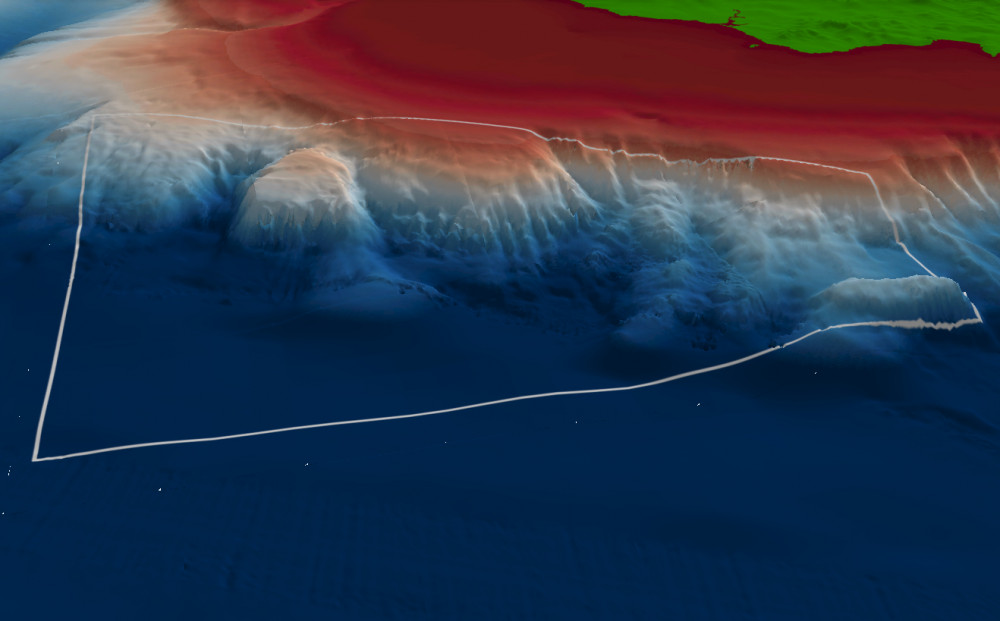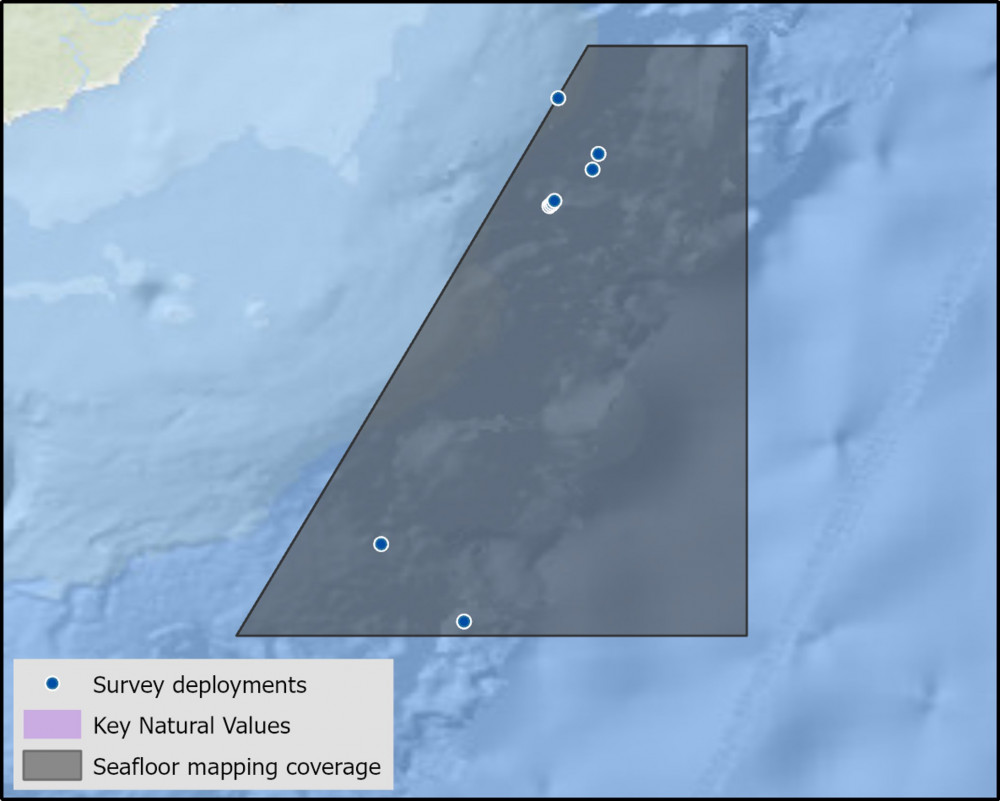East Gippsland Marine Park contains deep water habitats featuring large box canyons, ridges, margin slumps, and plateaus bordered by steep escarpments. It covers representative areas of the south-east transition bioregion.

Knowledge status
East Gippsland Marine Park has a medium level of knowledge.
- The significant geomorphology provides habitat for a diverse array of mobile and sessile (immobile) fauna and are the focus of research efforts aiming to characterise the unique structure of these valuable high biodiversity habitats.
- There has been 1 sediment sample collected from 1 survey.
- There is 1 Publication that references the South east network and relates to East Gippsland Marine Park.
- Depth: 604m – 5726m.
- 100% of seafloor mapped, almost all at medium to high resolution to support habitat mapping and biodiversity surveys.
Key values, habitats and communities

A prominent feature of the park is a large box canyon that borders the southern edge of a significant plateau feature. The canyon is distinguished by a steep incline at the head before cutting in at the lower slope and then progressing to the abyssal plain1.

Feature of interest
Mid bathyal seafloor habitats support a diverse array of mobile and sessile fauna. Twin sailed Salps (Thetys vagina) contribute valuable biomass to the seafloor2.
Key gaps
- Understanding impacts of emerging pressures on park values.
Key activities
- Commercial fishing
- Shipping
Key Pressures
- Resource extraction
- Climate change
- Underwater noise
Seafloor mapping and survey deployments

Further information
State of Knowledge published Mar 2023 | References:
- O’Hara, Tim. (2019). The Eastern Australian Marine Parks: Biodiversity, assemblage structure, diversity and origin.
- Henschke, et al. (2013). Salp-falls in the Tasman Sea: A major food input to deep-sea benthos.
Key Natural Values (KNV) = Habitat or species that are particularly important to management.
Printable version: AMP - SE SOK Placemat templates (parksaustralia.gov.au)

